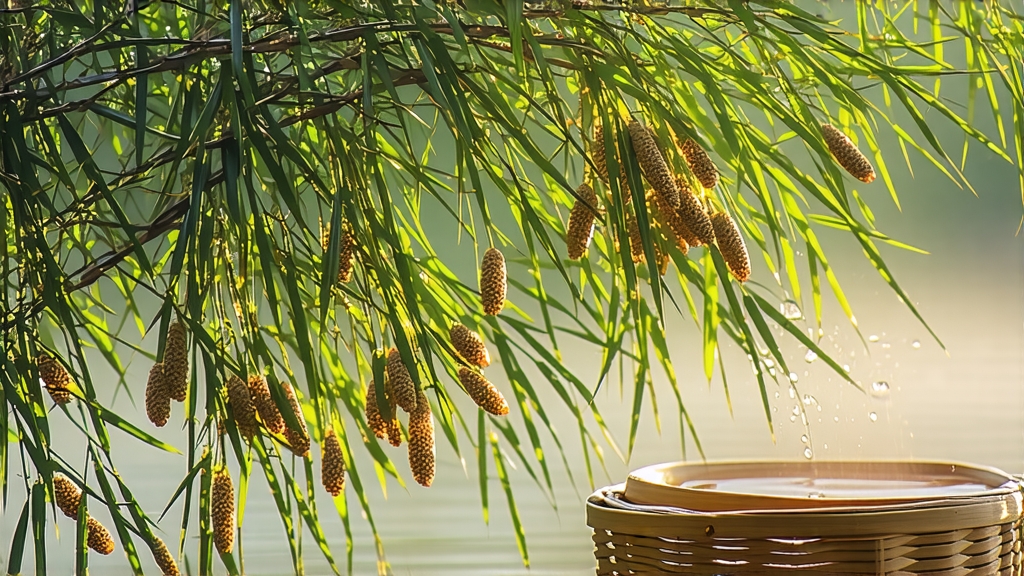
Meng Ding Huang Ya, literally “Yellow Bud from the Summit of Meng,” is the most aristocratic member of China’s tiny yellow-tea family. It is picked on the mist-crowned ridge of Mt. Meng, a 1,450-metre shoulder of the Tibetan Plateau that has supplied emperors since the Tang dynasty. Western tea maps usually stop at green, black and oolong; yellow tea is the forgotten fourth colour, and Meng Ding Huang Ya is its brightest pigment. This essay walks international drinkers through the legend, leaf, craft, cup and soul of a tea that once travelled in silver caravans to Chang’an and today quietly sleeps in the cellars of Chengdu collectors.
History: from elixir to exile
The first written record appears in 808 CE, when the monk Gan Dao presented “one liang of Meng buds, yellow as goose down” to Emperor Xianzong. Tang medical texts list it as an “elixir of coolness,” able to clear palace wine fumes overnight. Song dynasty tax registers show 560 kilograms levied annually; by Ming times the leaf had to pass through three imperial inspectors before leaving Sichuan. The Qing shifted the tribute route to coastal oolongs, and yellow tea fell into rural obscurity—only six families on the mountain still knew the full yellowing protocol in 1950. The 2008 Sichuan earthquake destroyed half the ancient terraces; replanting grants brought the area back to 180 hectares, but annual production remains below 3 000 kg, rarer than first-flush Darjeeling.
Micro-terroir: where clouds polish the leaf
Mt. Meng traps the Yarlung Tsangpo moisture; average humidity is 88 %. The bushes sit in a 30-centimetre diurnal temperature swing that slows photosynthesis, stacking amino acids: L-theanine reaches 4.2 %, double that of a Hangzhou Longjing. Soils are Devonian sandstone leached into a loose, acidic loam rich in selenium. The best plots face north-east, catching the first diffused light yet avoiding the fierce plateau noon; locals call this geometry “moon-shadow slope.” Frost risk on 20 March forces farmers to cover bushes with straw mats at night, adding a faint cereal note to the finished tea.
Cultivar identity: the small-leaf royal clone
Unlike southern yellow teas that use broad-leaf Assamica, Meng Ding Huang Ya is made from a local Camellia sinensis var. sinensis clone named “Gan Zhuang #9.” The bush has willowy branches and a dormant bud cycle that synchronises with the mountain’s fog calendar. Its young shoot carries only two visible scales, making the pluck extraordinarily small—1.5 cm versus 3 cm for Huo Shan Huang Ya. The low chlorophyll content gives the bud a creamy jade colour even before processing, a visual hint of the yellowness to come.
Harvest ritual: one bud, one breath
Picking starts when the Chinese redbreast first sings, usually between 20 March and 5 April. Only the “macaron” bud—still half-closed, bearing a single unfurling leaf—is accepted. A picker’s daily quota is 400 grams fresh, roughly 9 000 buds. Leaves rest in shallow bamboo sieves for two hours so that mountain dew evaporates; locals say they are “letting the bud remember the wind.” Any bruised tip is discarded because the yellowing step magnifies defects.
Craft: the confidential 48-hour yellowing
Yellow tea’s identity rests on “sealed yellowing” (men huang), a slow oxidation that occurs without rolling. Meng Ding Huang Ya uses a three-stage protocol unchanged since 1368:
- Sha Qing (Kill-Green) – Buds are hand-tossed in a 120 °C iron wok for 90 seconds; the goal is to rupture 15 % of cell walls, leaving 85 % intact for later enzymic migration.
- Re Tang (Hot Blanket) – Leaves are immediately wrapped in steamed hemp cloth and slid into a 38 °C bamboo chamber. Humidity is held at 75 % for four hours; chlorophyll begins to hydrolyse, releasing pheophytin that paints the leaf straw-yellow from the edge inward.
- Zhen Huang (Core Yellowing) – Bundles are transferred to a pine-wood box lined with wet rice paper. Temperature drops one degree every hour; over 40 hours the bundle is opened and re